This 15-day Vietnam - Cambodia itinerary offers a balanced blend of cultural immersion, stunning landscapes, and authentic local experiences, perfect for those seeking a comprehensive yet relaxed introduction to these captivating countries.
Vietnam and Cambodia are two Southeast Asian countries with different cultures. Ever since the first Europeans arrived in the area, they have always been amazed at the beauty of daily life, nature and unique architectural structures. As the two countries are close to each other with the ease of getting around here and there, why don't we take a combined Vietnam and Cambodia trip? In this article, we present a 15-day Vietnam and Cambodia itinerary that is highly valued by our clients because of the rich experiences and excellent contacts with locals. The itinerary allows you to get a general view of the two countries but not too hastily.
1. Things to note before traveling to Vietnam and Cambodia
1.1. The visa for Vietnam and Cambodia
Choosing an arrival airport is the first thing we need to consider when planning for Vietnam and Cambodia Itinerary in 15 days, then we need to see the country's visa requirements.
For Vietnam, you can see more information about visas for Vietnam here: Vietnam Visa requirement and fee for all nationalities
For Cambodia, you have to get a visa and there are 2 ways to do a visa on arrival or an e-visa (which is accepted only at international airports).
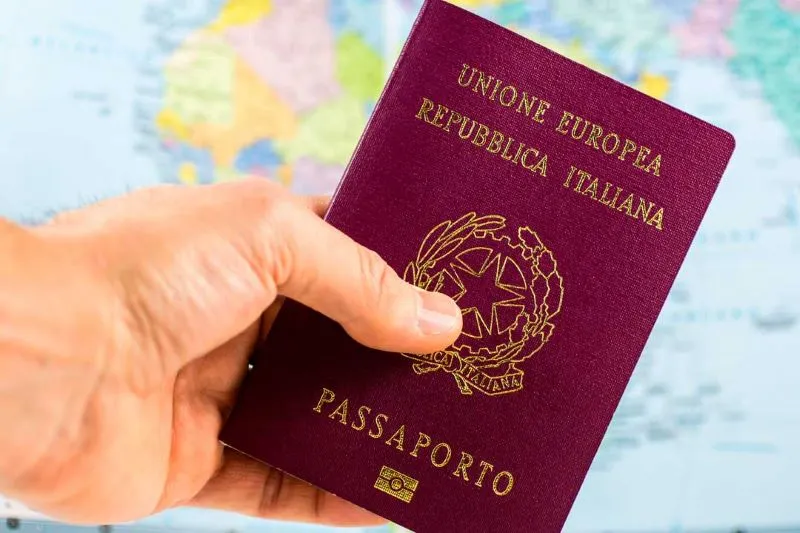
1.2. Climate
Vietnam’s climate changes slightly from North to South so you need to evaluate the climate situation well before choosing to give more attention to which region in the country. For more detailed information on Vietnam's climate, please read more in this article: Best Time to Visit Vietnam by Region and Month
Having a geological location similar to the southern part of Vietnam, Cambodia has 2 main seasons: the dry season from November to April and the rainy season from May to October. In the dry season, the weather is good enough for outdoor activities that are not affected by rainfall, but this means that the heat will be very strong, especially at midday. On the other hand, the rains come quite often during the monsoon period, especially in the early morning and late afternoon. It cools down the atmosphere and brings water to Tonle Sap Lake, the source of Cambodian life.
1.3. International Flights
To make the most of geological sites in Vietnam and Cambodia, it's best to travel through both countries in a single trip, rather than backtracking to Vietnam. Going back and forth would mean extra flights and transfers, adding unnecessary expenses to your trip.
So we suggest 2 excellent choices for international flights:
- Arrival at Noi Bai airport in Hanoi and departure from Siem Reap airport.
- Arrival at Siem Reap Airport and departure from Noi Bai Airport.
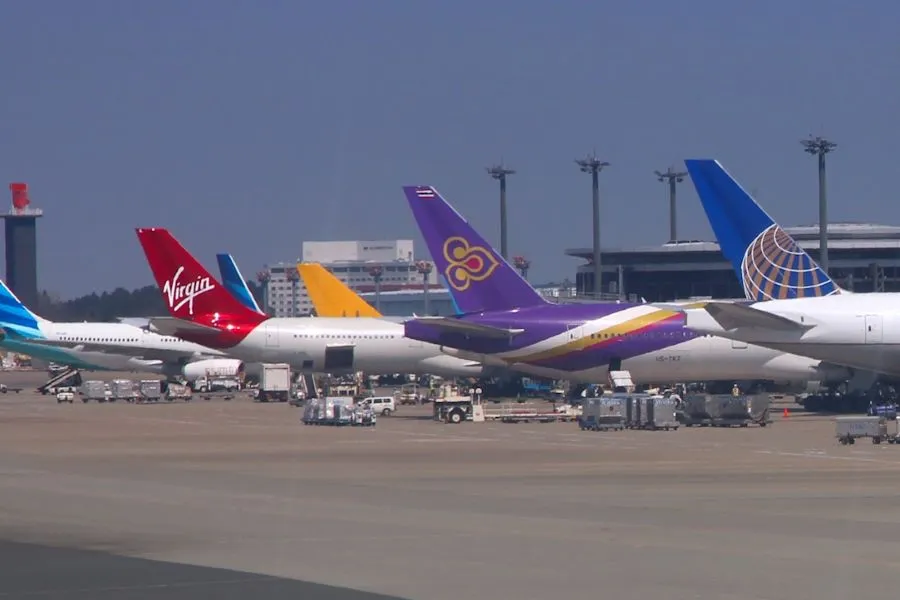
2. Ideal Vietnam and Cambodia itinerary for your first trip
In this article, we assume that your Vietnam - Cambodia trip will start in Hanoi and end in Siem Reap. However, it's completely customizable. Just send us your inquiry to create your perfect trip!
- Day 01: Arrival Day - Arrival in Hanoi
Arrive in Hanoi on this day after many hours of travel. With an itinerary ass.umed like this, you will get your visa stamp or visa waiver at the airport. Your passport must be valid for at least 6 months from the departure day and have at least one blank page.
At the entrance, if you go with a local agency, a local will be waiting for you to greet and to introduce you to our country. You can get support in exchanging money, buying local SIM cards or even dealing with unforeseen issues. Otherwise, you can follow the guide about Hanoi international airport to learn more useful information.
Today, you can get total rest to recover from jet lag or take a nice walk to warm up and have your first contact with friendly Hanoi people.
If you arrive early in the morning, don't forget to check with the hotel if you want the room before 2 p.m., the international check-in time. Hanoi is the capital of Vietnam which is also a popular city for many tourists, the city is not too bustling so you can walk around in the afternoon. The recommended area is the Hanoi Old Quarter, which could offer you many things to see, such as good food. Don't forget to bring a map so you don't get lost in Hanoi's road systems.
- Day 02: All-day trip to discover Hanoi - the capital of Vietnam - Why not?
Hanoi is the capital of Vietnam and has so many world heritages recognized by UNESCO, Hanoi is an important testimony of the country's development and history. In many aspects, Hanoi offers you something to enjoy.
There are many things to see in Hanoi, but since this is your first time in Vietnam, don't miss these attractions: the Ho Chi Minh Mausoleum, the Temple of Literature, the Tran Quoc Pagoda, the Ethnographic Museum.
You can see all the top tourist attractions in Hanoi through this article: Top Hanoi attractions.
If you have more days, you can also consider visiting other handicraft villages or pagodas in the vicinity of Hanoi, such as: Duong Lam ancient village, Bat Trang ceramic village, Quang Phu Cau incense village, Perfume pagoda,...
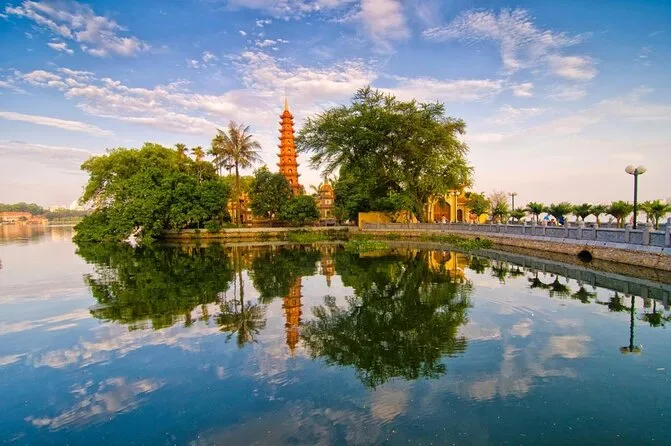
Tran Quoc Pagoda
- Day 03: Day excursion to Ninh Binh - first capital of the Monarchy
On this day, you can leave for Ninh Binh - the first capital of the Monarchy of Vietnam. However, it is not only an ancient capital, Ninh Binh is also beautiful for alternating between life and nature, between rivers and the limestone mountains.
In Ninh Binh you can visit Trang An, Tam Coc, Van Long Nature reserve, Bich Dong pagoda, Bai Dinh pagoda,... Though one day is not enough for all attractions, you still can get an overview. See more What to do in Ninh Binh: full travel guide to see the most suitable destinations with you and how to combine tourist sites for a best experience.
In the late afternoon, return to Hanoi and prepare for the next outstanding day.
If you don't want to go back to Hanoi today, you can stay overnight in Ninh Binh to prepare for your next day to Halong Bay. Do not expect many choices of good restaurants and lively evening life in Ninh Binh as in Hanoi.
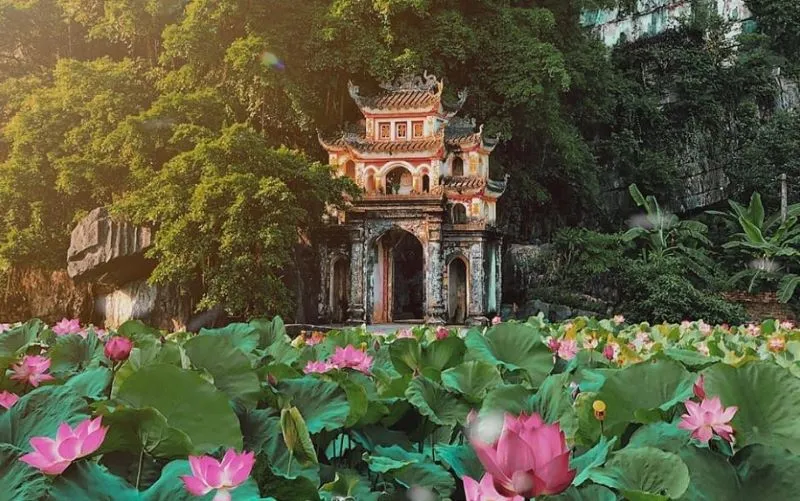
Thai Vi Temple
- Day 04: Visit the famous Halong Bay to discover the land where the Dragon Descends.
Today, leave for Halong Bay, a heritage site of the country that is recognized 2 times by UNESCO and is one of 7 Wonders of the World. If you visit the bay in the summer, don't forget to bring swimsuits.
To get to the bay, you can go by shuttle bus or private car. Suppose you are a group of 6 people or also have children, we recommend using a private car for convenience and to avoid excessive time getting up early and waiting at the bus stop for the bus to accommodate other tourists.
There are also 2 alternatives to Halong Bay: Bai Tu Long Bay and Lan Ha Bay. All the bays are located in the Gulf of Tonkin and offer us breathtaking scenic scenery.
In the Gulf of Tonkin, there are so many cruises and choosing a suitable one is not easy, read the article Choose Ha Long Bay, Lan Ha Bay or Bai Tu Long Bay for a Cruise in Vietnam? to learn all about the itineraries and check availability of various cruise options from 3 to 5 stars.
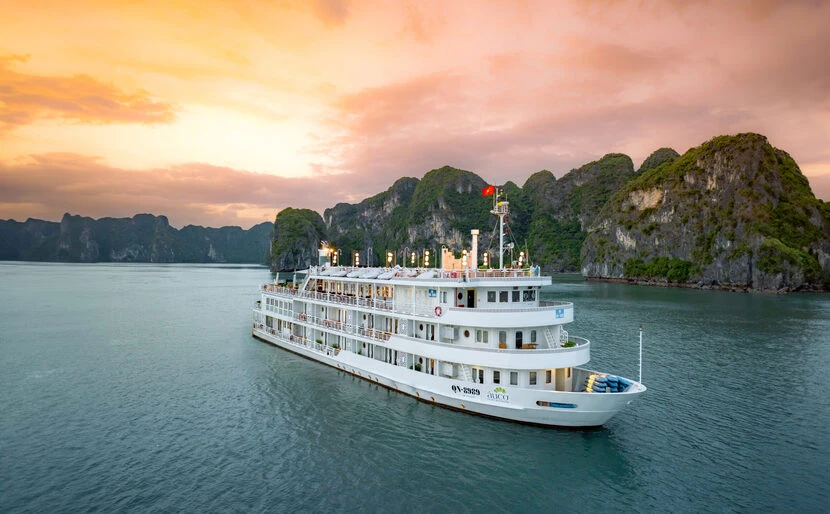
Cruising in Halong Bay
- Day 05: Cruise in Halong Bay - back to Hanoi - Flight to Hue
So far you have spent a memorable 5 days in North Vietnam so now it is time to discover another region - Central Vietnam. The next recommended stop is Hue.
After the trip to the bay, head back to the pier to return to Hanoi. If you transfer by shuttle bus, it will take you to Hanoi where you take the cab or car to the airport while if you go by private car, it will take you directly to the airport for the flight to Hue. It is important to choose the flight from Hanoi to Hue and the time for your dinner.
Upon arrival in Hue, as in Hanoi, proceed the transfer to Hue city center.
In other ways, you can transfer to Hue by an overnight train which leaves around 7:30 p.m in Hanoi and arrives around 09:00 a.m. in Hue the following morning.
- Day 06: Hue Imperial City - the capital of Vietnam's last dynasty
On the 6th day, you can take an intensive excursion to discover the history and monuments in Hue. Scattered around the city are the majestic Mausoleums of King Minh Mang, King Khai Dinh, King Tu Duc, the Forbidden Citadel, the Imperial Museum, the solem Thien Mu Pagoda, Tu Hieu Pagoda, Hon Chen Temple, An Hien Ancient House, etc.
If you want to contact with locals to see more of authentic life, you can choose to combine some famous sites in Hue with Thuy Bieu village or Thanh Tien - Tien Non craft villages.
>> See more: How to arrange your Hue itinerary
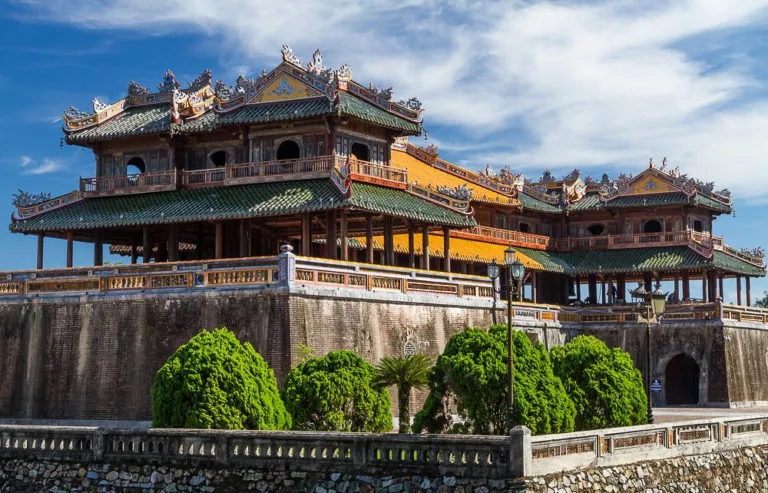
Forbidden Citadel in Hue
- Day 07: Explore Hoi An - a living museum of history and culture
From Hue you can travel to Hoi An, a very beautiful small town that is known as the city of lanterns, within a distance. If you leave Hue in the morning, arrive in Hoi An around noon and you can spend the whole afternoon sightseeing, admiring the change of light from noon to evening, when all the streets are lit with lanterns.
If you have more days, you can add a day to visit the surrounding villages Kim Bong, Tra Nhieu, Cam Thanh, or take a trip to Cham Island, My Son Sanctuary, you can totally relax on sandy beach in few days if you are in Vietnam from April to September.
- Day 08: Discover Ho Chi Minh City, aka. Saigon, once known as the Pearl of the Orient
On the 8th day, take your flight to Saigon and spend a half day sightseeing. There are interesting attractions such as: the Grand Opera House, the Post Office, the Notre Dame Cathedral, the War Museum, and the Reunification Palace. It depends on your taste to choose the most suitable route.
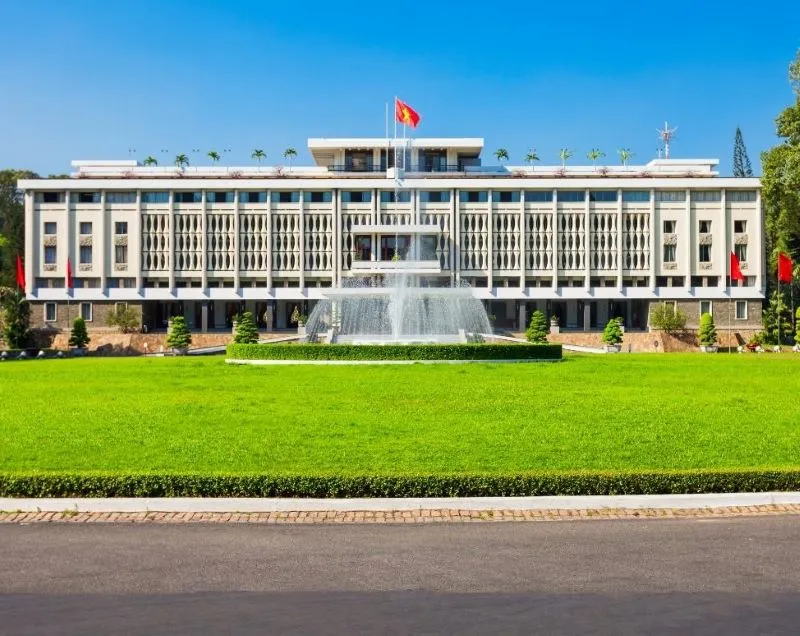
Reunification Palace
If you have an extra day, you can also visit Tay Ninh to see the temple of Caodaism and the Cu Chi Tunnels. See more Cu Chi Tunnels tour & Cao Dai Temple day trip.
- Day 09: Head forward to Ben Tre and spend a night in Can Tho
Today, go toward the rustic Mekong Delta area. You will arrive in Ben Tre which is known as "coconut country" around noon. A great way to get around in the coconut gardens is by bicycle or xe loi. Besides being the region with the largest coconut export in Vietnam, Ben Tre is a really fascinating destination, whose people are generous and friendly. The day's excursion will end in Can Tho, which is considered "the capital of the Mekong Delta."
- Day 10: Discover the floating market and the Tra Su Cajuput forest
The Mekong Delta is famous for beautiful and very lively floating markets, and the Cai Rang market in Can Tho is truly a must-see. To visit its best, you need to get up early and be ready to leave no later than 06:30 a.m from your hotel and visit it by boat.
After this experience, head to Chau Doc, the village on the border with Cambodia and spend all afternoon at the most beautiful sites such as Tra Su Cajuput forest, Sam Mountain with Ba Chua Xu temple.
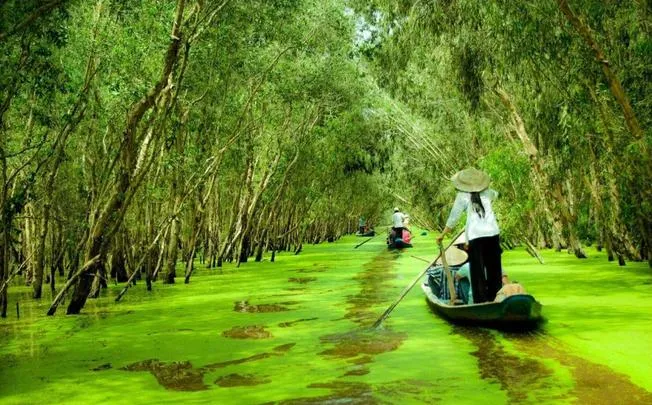
Tra Su Cajuput Forest
- Day 11: Enter Cambodia from Vietnam by speedboat via the Mekong River
Departure from Chau Doc to Phnom Penh by speedboat on this day, which will last around 6 hours. You arrive in Phnom Penh around 1 p.m. and spend your afternoon for the first discovery of Phnom Penh, the capital of Cambodia.
Please note that for entry via river borders, e-visas are not valid. A visa approval letter is required.
Phnom Penh City is quite large so you should book a hotel in the center to enjoy a very different pace of life from Vietnam and visit the local markets. There is also a chance to visit Phnom Penh night market.
If you don't want an afternoon like that to recover, you can also go to the Tuong Sleng School, which used to be a prison during the Khmer Rouge period. It's not really a suitable place for sensitive people and children because the reality and cruelty of the Khmer Rouge touch them.
- Day 12: Explore the capital of Cambodia, get closer to Khmer culture and depart for Siem Reap at noon
In the first morning in Cambodia, don't miss the chance to go to the national museum, the Royal Palace, the Silver Pagoda and Wat Phnom pagoda. These are treasures of Phnom Penh!
At noon, you can go by shuttle bus to Siem Reap or by private car for a chance to stop at Skoun-Spider villages and taste its specialty. This crispy dish is described as a protein-rich snack.
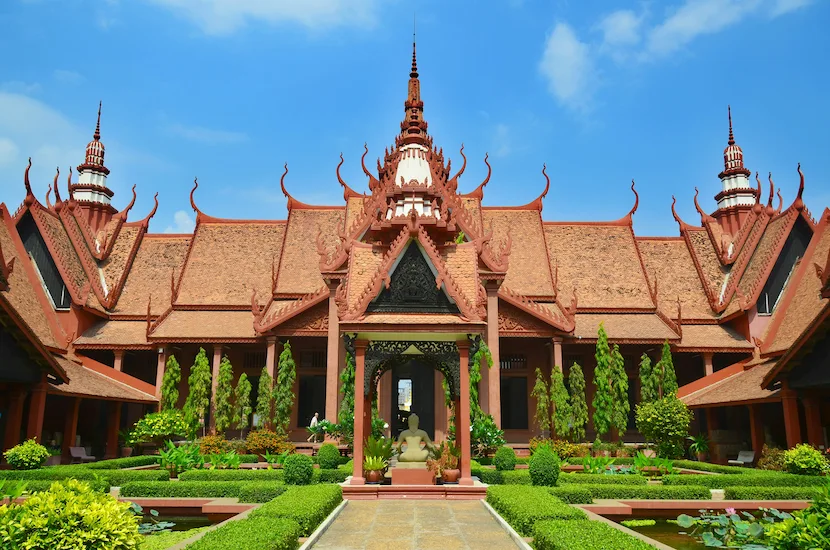
National Museum
- Day 13: Visit the fairgrounds of the Cambodians: the Angkor Wat complex
We certainly cannot miss this world heritage site which is the great Cambodian Wat complex. It is a very huge complex that includes smaller but very attractive sites.
From downtown Siem Reap you can go by car, cab or tuk-tuk to Angkor Wat. However, in the dry season, we do not recommend you use the tuk-tuk since the road leading to the complex is quite dusty.
In Angkor Wat, you can see temples such as Bayon and Ta Prohm - where they filmed the movie "Lara Croft: Tomb Raider - 2001", Angkor Wat, Angkor Thom.
The day can be full of new knowledge so at the end of the day, you can make a stop at the Angkor Museum for an abbreviation.
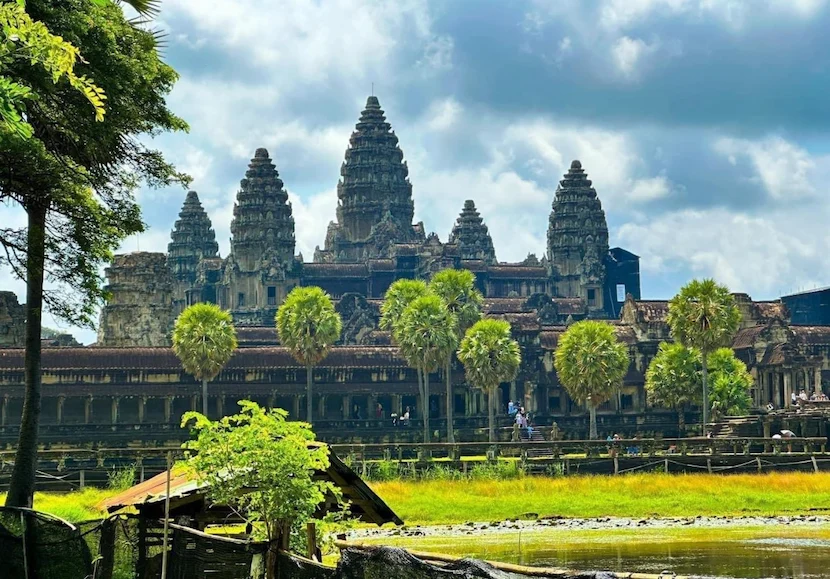
Angkor Wat complex
- Day 14: Siem Reap - Phnom Kulen - Banteay Srei
For Hindus in Cambodia, Mount Kulen - Phnom Kulen is a sacred mountain where the stream of thousands of lingas is located. This will be a bit of an adventurous trip for tourists because you have to go up the mountain. If you cannot go up the mountain, then on this day, you can change to Banteay Samre village to explore the procedure of making sagu - the famous palm sugar in Cambodia.
On the way back, don't forget to visit a very beautiful temple at the Angkor complex - Banteay Srei where it offers you a chance to admire the very unique bas-relief wall.
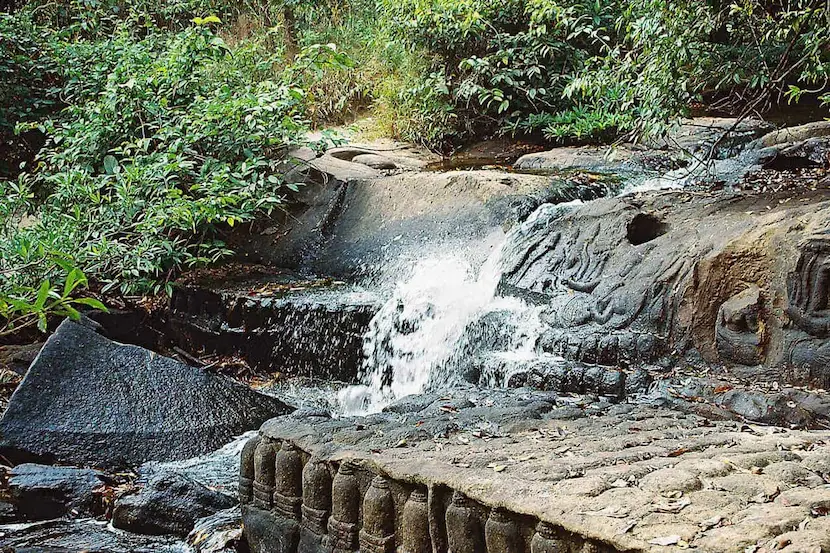
Phnom Kulen
- Day 15: Boat excursion to Tonle Sap Lake and departure flight in the afternoon
It would be a pity if we did not go to Tonle Sap Lake - the source of life for so many Cambodians. The lake is home to so many people living on boát, even those who cannot. During the rainy season, thanks to the floods, a large amount of fish from the upper Mekong River come to the Tonle Sap and feed the local people. During this period, the depth of the lake is 9 times more than the dry period.
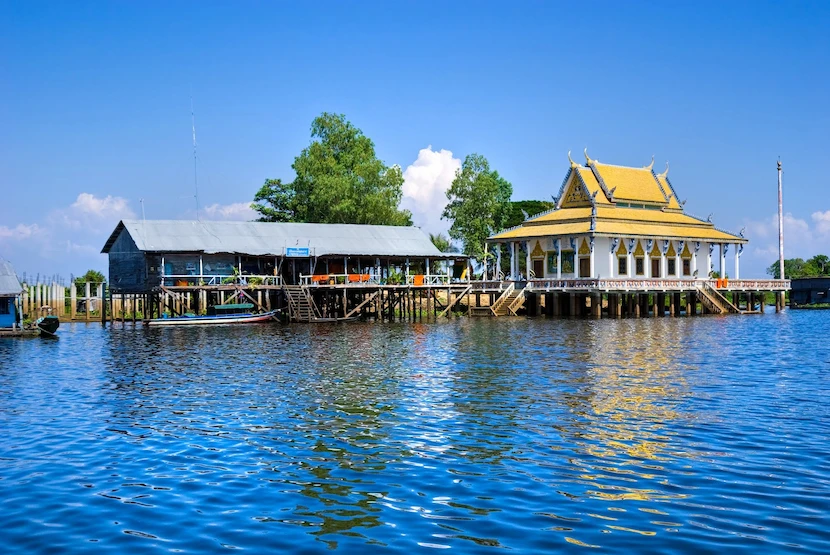
Floating village in Tonle Sap Lake
Although the rainy season runs from May to January, visiting Tonle Sap during this time offers a more authentic glimpse into local life than visiting during the dry season (February to April).
In the afternoon, take the flight back to your country.
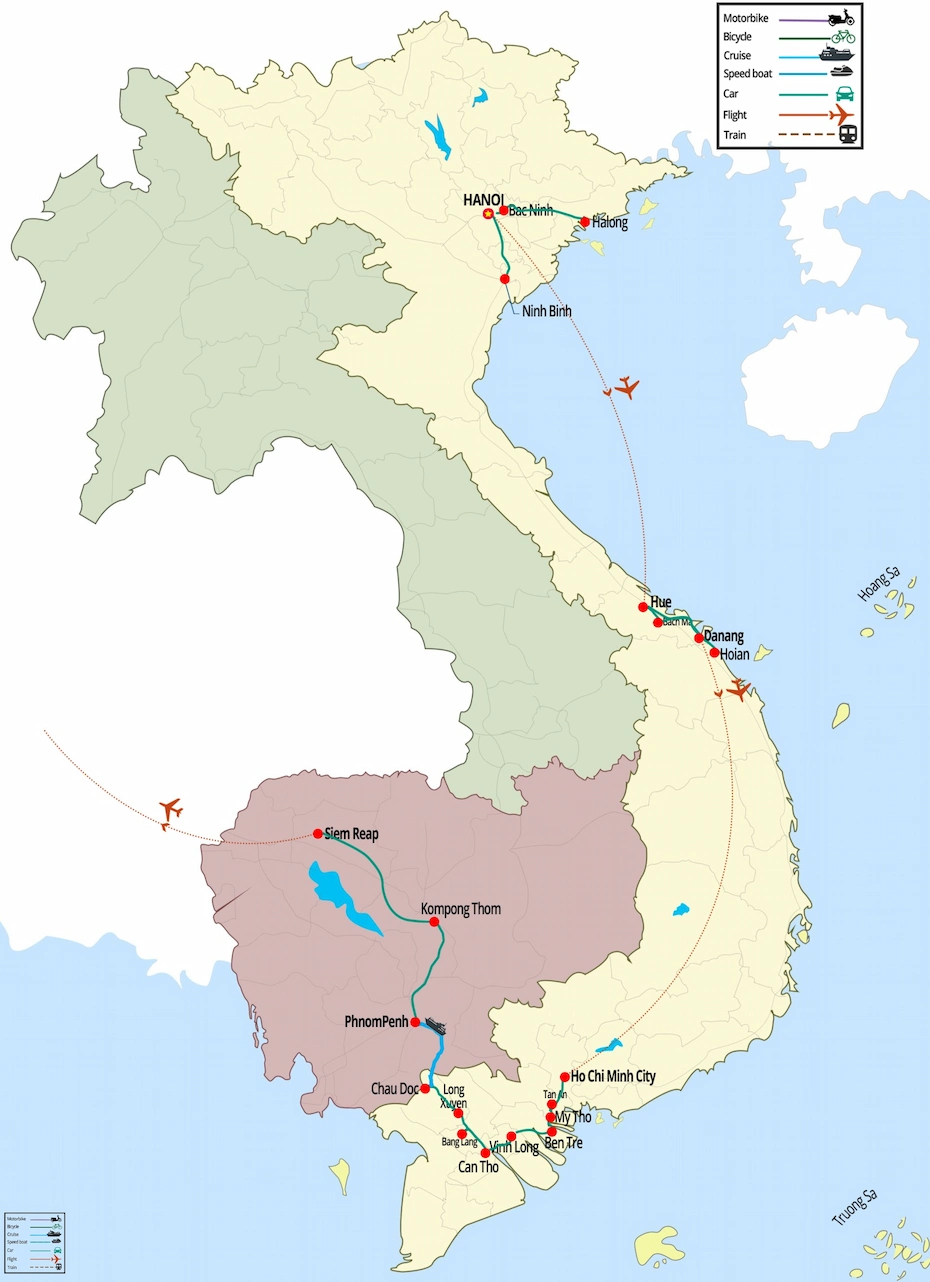
Travel map of Vietnam and Cambodia in 15 Days
Here's the abbreviated itinerary so you have a clearer idea.
Day 1: Hanoi arrival
Day 2: Hanoi discovery
Day 3: Hanoi - Ninh Binh - Hanoi
Day 4: Hanoi - Halong Bay
Day 5: Halong Bay - Hanoi - flight to Hue
Day 6: Hue Imperial City exploration
Day 7: Hue - Hoi An Ancient Town
Day 8: Hoi An - flight to Ho Chi Minh City
Day 9: Ho Chi Minh City - Ben Tre - Can Tho
Day 10: Can Tho - Chau Doc
Day 11: Chau Doc - Phnom Penh
Day 12: Phnom Penh - Siem Reap - Tonle Sap
Day 13: Siem Reap - Angkor Wat - Angkor Thom
Day 14: Phnom Kulen - Banteay Srei
Day 15: Siem Reap departure
Vietnam - Cambodia Tour Details & Price
To request a customized itinerary for 15-day Vietnam and Cambodia package, please contact us via email at [email protected].
See more:
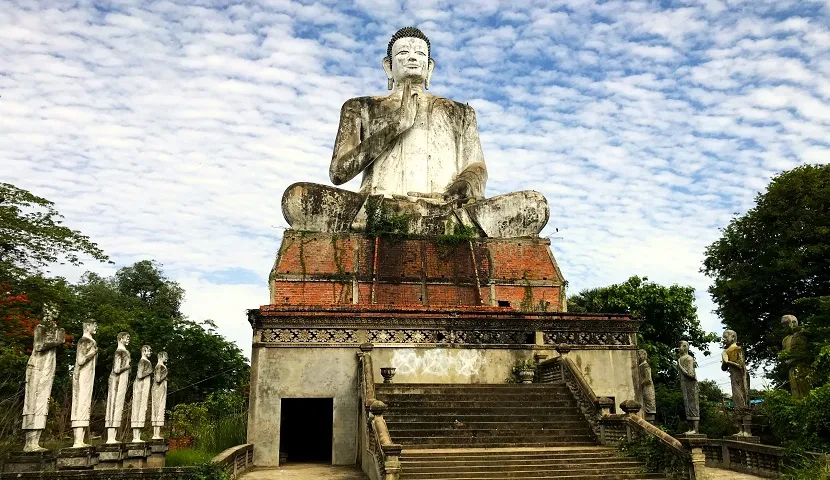






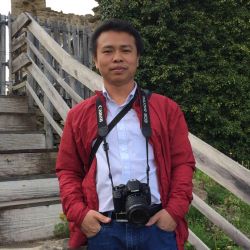
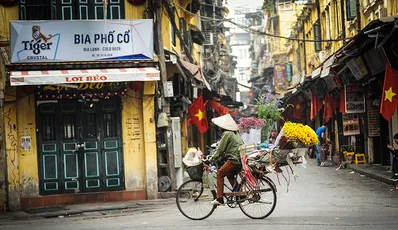
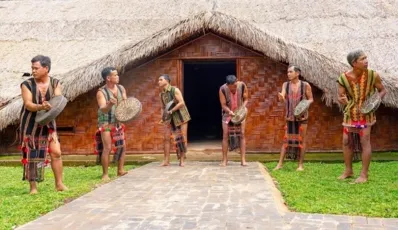
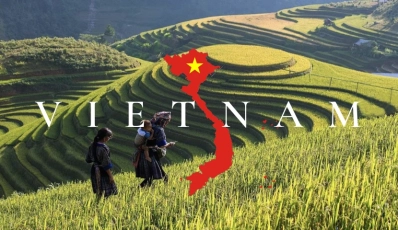
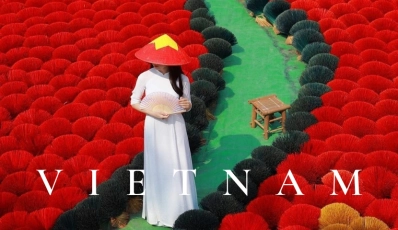
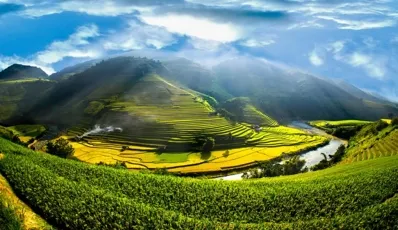

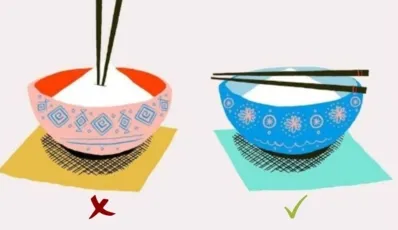
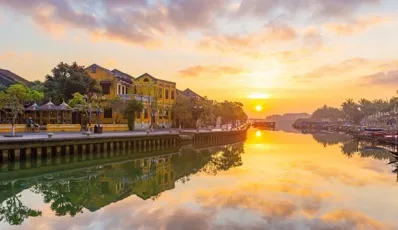
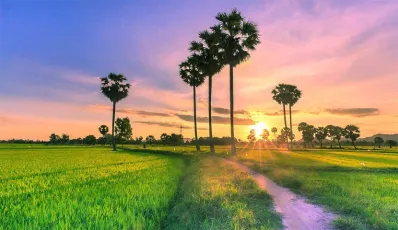
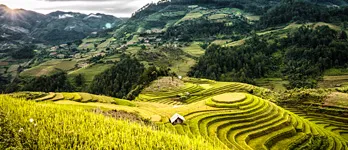
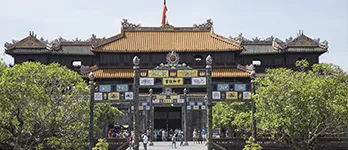
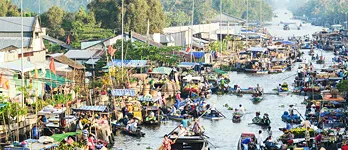

 TRAVELERS' CHOICE 2025
TRAVELERS' CHOICE 2025 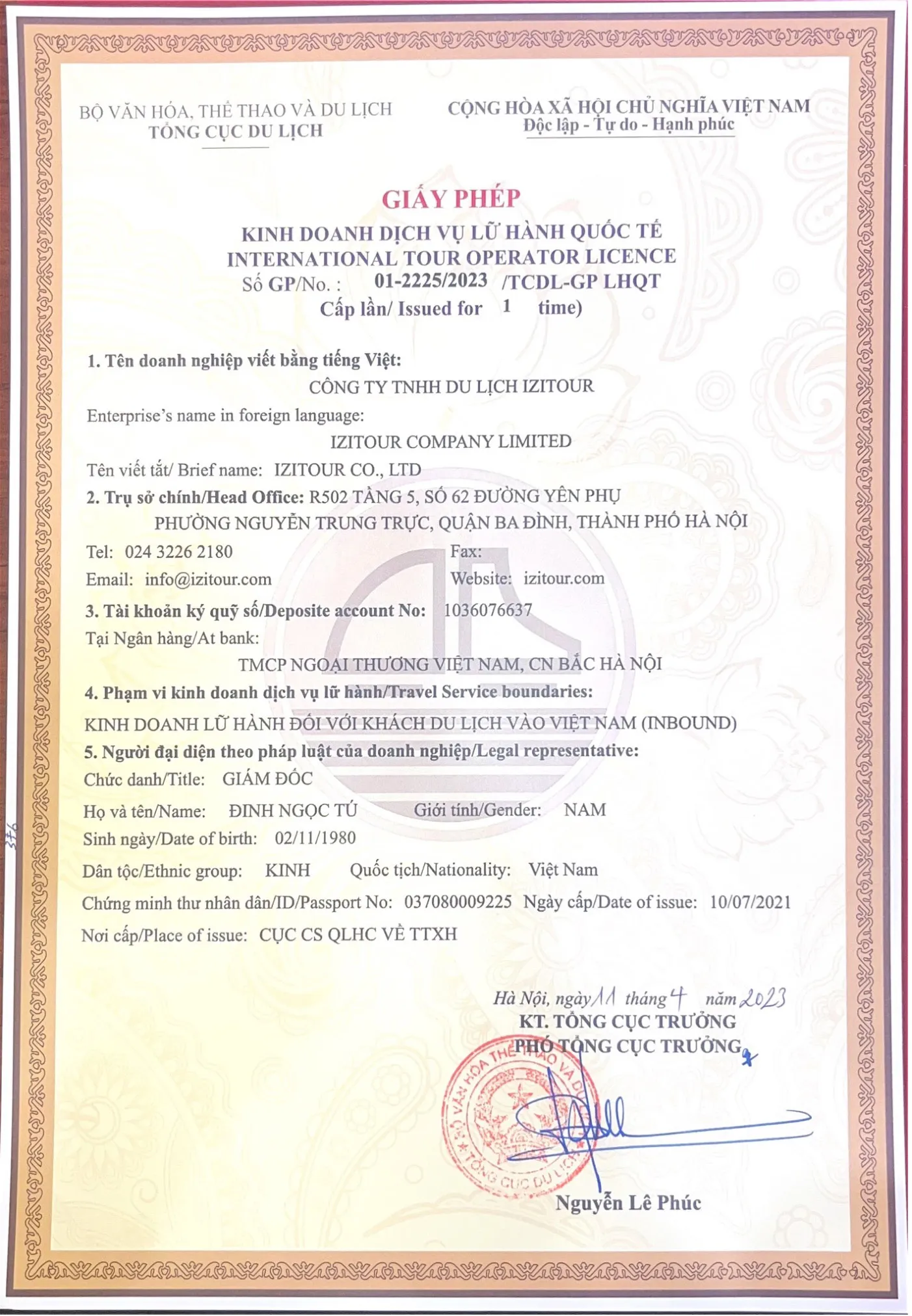



13 Comments
Italy
Vietnam
Italy
Vietnam
-/-
Vietnam
Italy
Italy
Vietnam
United States
Vietnam
Netherlands
Vietnam
Write Reply